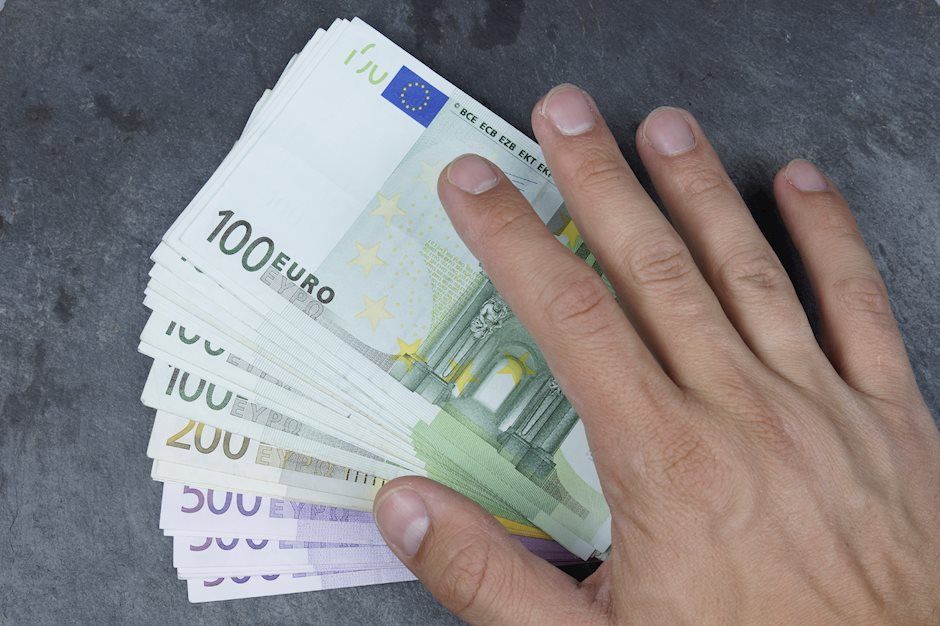EUR/USD holds positive ground near 1.0900 amid weaker US Dollar
- EUR/USD edges higher to 1.0895 in Monday’s early Asian session, up 0.12% on the day.
- Fed’s Williams said the US central bank was "getting us closer to a disinflationary trend that it’s looking for.
- The ECB left interest rates unchanged last week and gave no hints about rate cuts at its next meeting.

The EUR/USD pair gains ground near 1.0895 during the early Asian session on Monday. The decline of the US Dollar (USD) provides some support for the major pair. The German Retail Sales for May are due later in the day, followed by the US Chicago Fed National Activity Index for June.
The rising bets on the Federal Reserve (Fed) rate cut in September and the fragility of the US labor market exert some selling pressure on the Greenback. According to the CME FedWatch Tool, financial markets are now pricing in the probability of a move at its July meeting less than 5%, and pricing in a nearly full rate cut is firmly expected in September. New York Federal Reserve President John Williams said on Friday that an interest rate cut could be warranted in the coming months, but not at its July policy meeting.
On the Euro front, the European Central Bank (ECB) policy decision came as expected, with no change in the interest rates. The ECB President Christine Lagarde refrained from committing to a pre-defined rate-cut path. Lagarde said that while Eurozone inflation was on a “disinflationary track," the ECB would still need to keep rates high. The markets have priced in the odds for a September rate cut at 65%, down from 73% immediately before the decision. The data dependency approach from the ECB is likely to underpin the shared currency in the near term.
Euro FAQs
The Euro is the currency for the 20 European Union countries that belong to the Eurozone. It is the second most heavily traded currency in the world behind the US Dollar. In 2022, it accounted for 31% of all foreign exchange transactions, with an average daily turnover of over $2.2 trillion a day. EUR/USD is the most heavily traded currency pair in the world, accounting for an estimated 30% off all transactions, followed by EUR/JPY (4%), EUR/GBP (3%) and EUR/AUD (2%).
The European Central Bank (ECB) in Frankfurt, Germany, is the reserve bank for the Eurozone. The ECB sets interest rates and manages monetary policy. The ECB’s primary mandate is to maintain price stability, which means either controlling inflation or stimulating growth. Its primary tool is the raising or lowering of interest rates. Relatively high interest rates – or the expectation of higher rates – will usually benefit the Euro and vice versa. The ECB Governing Council makes monetary policy decisions at meetings held eight times a year. Decisions are made by heads of the Eurozone national banks and six permanent members, including the President of the ECB, Christine Lagarde.
Eurozone inflation data, measured by the Harmonized Index of Consumer Prices (HICP), is an important econometric for the Euro. If inflation rises more than expected, especially if above the ECB’s 2% target, it obliges the ECB to raise interest rates to bring it back under control. Relatively high interest rates compared to its counterparts will usually benefit the Euro, as it makes the region more attractive as a place for global investors to park their money.
Data releases gauge the health of the economy and can impact on the Euro. Indicators such as GDP, Manufacturing and Services PMIs, employment, and consumer sentiment surveys can all influence the direction of the single currency. A strong economy is good for the Euro. Not only does it attract more foreign investment but it may encourage the ECB to put up interest rates, which will directly strengthen the Euro. Otherwise, if economic data is weak, the Euro is likely to fall. Economic data for the four largest economies in the euro area (Germany, France, Italy and Spain) are especially significant, as they account for 75% of the Eurozone’s economy.
Another significant data release for the Euro is the Trade Balance. This indicator measures the difference between what a country earns from its exports and what it spends on imports over a given period. If a country produces highly sought after exports then its currency will gain in value purely from the extra demand created from foreign buyers seeking to purchase these goods. Therefore, a positive net Trade Balance strengthens a currency and vice versa for a negative balance.
Author

Lallalit Srijandorn
FXStreet
Lallalit Srijandorn is a Parisian at heart. She has lived in France since 2019 and now becomes a digital entrepreneur based in Paris and Bangkok.

















